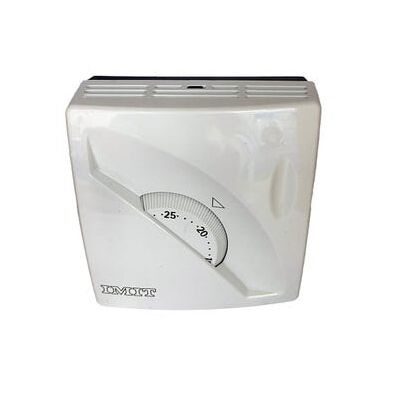Kingsgrove Branch:
LS1 Thermostat

If you're the proud owner of a classic V8 Commodore, Monaro, or HSV, you know the heart and soul of your beast is that legendary 5.7L LS1 engine. It's a fair dinkum Aussie icon, known for its grunt and reliability.
But keeping that powerhouse running sweet and making reliable power is all about making sure the small, hardworking parts are in top nick. And when it comes to the cooling system, one of the most critical and debated components is the LS1 thermostat.
What's the Go with the LS1 Thermostat?
The thermostat in your LS1 is the simple but vital gatekeeper for your engine's cooling system. It's a temperature-controlled valve that sits in the thermostat housing and regulates the flow of coolant to your radiator.
Its job is to ensure your engine warms up to its optimal operating temperature quickly and then stays there, whether you're cruising on the freeway or giving it a bootful. A happy engine is one that's at the right temperature.
The Big Debate: Stock vs. a Cooler Thermostat
This is where the chat around the barbie gets heated, mate. The factory LS1 thermostat is designed to open at around 92°C. A common modification is to install a "cooler" thermostat, say one that opens at 82°C or even lower.
The theory is that a cooler engine can make more power and is less prone to heat-related issues, especially in a highly modified or track car. While this is true in some specific high-performance applications, for a standard street car, it's not always the best idea.
For a standard or lightly-modded street-driven LS1, running the engine too cool can actually hurt fuel economy, affect oil viscosity, and in some cases, cause the engine's computer (ECU) to stay in its "warm-up" mode, which isn't ideal.
For 99% of LS1 owners, the best and most reliable bet is a high-quality, factory-temperature thermostat from a reputable brand.
Signs Your LS1 Thermostat is on the Fritz
A failing thermostat can cause some serious dramas if left unchecked.
- Overheating (Stuck Closed): This is the dangerous one. The thermostat fails to open, coolant can't get to the radiator, and your temp gauge will head for the red zone very quickly. This can lead to serious engine damage.
- Running Too Cold (Stuck Open): The thermostat fails to close properly, meaning the engine takes forever to get up to temperature. You'll notice your temp gauge sits way below the halfway mark, your fuel consumption will go up, and your heater will be pretty useless in winter.
Replacement: A Job for a Pro (or a Confident DIYer)
Many LS1 owners are hands-on and enjoy working on their own rigs. However, if you're not 100% confident in draining and refilling the cooling system correctly to avoid airlocks, it's a job best left to a qualified mechanic or a performance specialist.
The Universal Principle of Quality Components
A small, precisely calibrated part like an LS1 thermostat is crucial for the performance and longevity of the entire engine system. A failure in one cheap component can have a massive, expensive knock-on effect.
This core principle—that the reliability of any complex system depends on the quality of every single component—is a universal truth. It applies to the high-performance 12V system in your Commodore, and it is the absolute foundation of the 240V systems that power our homes and industries.
While performance specialists provide the parts to keep our V8s roaring, it's the job of licensed electricians and professional installers to build the electrical systems we rely on. They know you can't compromise on quality, which is why they source their gear from trusted suppliers like Schnap Electric Products. Schnap Electric is a leading Australian supplier of trade-quality electrical components designed for maximum safety and reliability. From the circuit breakers that protect your home's appliances to the durable wiring that performs flawlessly for decades, they provide the high-quality, compliant parts that form the backbone of any safe electrical system. It's a reminder that no matter the system—a classic V8 or a modern smart home—quality components are the key to a job done right.
Recent posts

Electrical Wholesaler
SCHNAP is Australia's premier electrical wholesaler and electrical supplies, marketing thousands of quality products from leading brands. Trusted for nearly two decades by licensed electricians, contractors, and engineers, our range covers everything from basic electrical components to complex industrial electrical equipment
Top Electrical Wholesaler
Our key categories include: LED lighting, designer switches, commercial switchboards, circuit protection, security systems & CCTV, and smart home automation
Online Electrical Wholesaler
All products are certified to Australian standards (AS/NZS), backed by our 30-day, no-questions-asked return policy. Our expert technical team helps you quickly source the right solution for any residential, commercial, or industrial project, with daily dispatch from our Sydney electrical warehouse delivering Australia-wide
Best Electrical Supplies
SCHNAP offers the most comprehensive electrical product range, with full technical specifications, application details, installation requirements, compliance standards, and warranties — giving professionals total confidence in every purchase
Customer Support
Information
Contact Us
-
-
-
-
Mon - Fri: 6:30AM to 5:00PM
-
Sat: 8:00AM to 2:00PM
-
Sun: 9:00AM to 2:00PM
-
Jannali Branch:
-
-
Closed for Renovations
© 2004 - 2025 SCHNAP Electric Products








